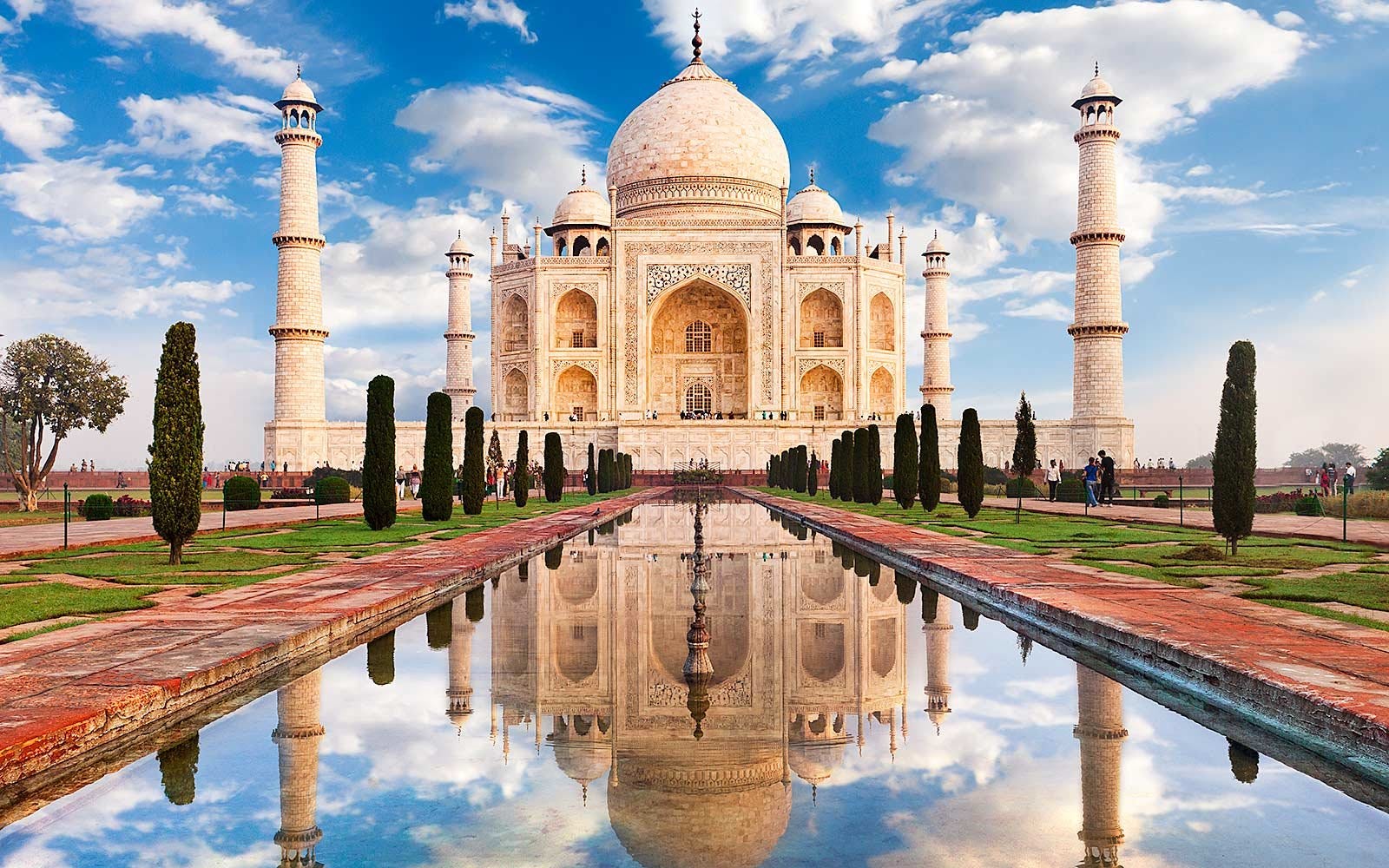Oliver Wapshott, British journalist, is the son of Louise Nicholson - an Indian . He knew the Taj Mahal as a child. After returning to India, Ms. Nicholson showed those pictures of the tomb and the story behind it. Since then, the Taj Mahal has remained silent in Oliver's mind.

At school, Oliver painted the shape of the tomb when asked to draw his favorite place, while his friends competed to draw Buckingham Palace or Big Ben clock tower.
Oliver's dream of visiting this famous building came true when he was 7, on a hot April day on a trip with his parents and brother. Taj Mahal was "beyond expectations" of the Wapshott family. They feel that the building is like a living entity, also has a soul.
This mausoleum is not only India's most famous destination thanks to its architecture, but also by the romantic, faithful love story behind.
In 1628, Shah Jahan became ruler of the Mughal empire of India (known as the Lord of the World). The third wife, Queen Mumtaz Mahal, died in childbirth in 1631 in Burhanpur. Grief-stricken at the death of his wife, the emperor built a monument to show their eternal love. In the same year, the construction of the Taj Mahal began.
This architectural complex includes 5 items: the main gate, the garden, the mosque, the resort and the main tomb. Materials are brought from many places like India, Central Asia, Middle East. 22,000 workers and 1,000 elephants have worked continuously for more than 20 years to complete the tomb - where the king's nostalgia and love for his wife are lost.
In the Taj Mahal complex, everything is symmetrical. The only things that are against this rule are graves. The resting place of Queen Mumtaz Mahal is located in the center of the tomb, on the right is King Shah Jahan's.

There are many legends about the Taj Mahal. One of them is the king's instruction to cut all arms and blind the eyes of the artisans who built this work. Because he did not want the world to have a second masterpiece like that.
Divay Gupta, director of the National Arts and Cultural Heritage Trust, said one of the things about Tal Mahal that tourists like most is to see it from across the Yamuna River, from the Arga fortress. That's what Shah Jahan did during the last years of his life, after being overthrown and imprisoned there by his son.
To enter the Taj Mahal complex, visitors must go through the security gate. You cannot bring anything other than cash to buy tickets and cameras. Go to the gate, you will have a glimpse of Taj Mahal, then follow the wide path, leading to the middle of the garden and then the mausoleum. Rebecca Sulliva, from Australia, said her daughter loves to wander the expansive campus and wants to take selfies.
According to Lonely Planet, from April 2018 visitors are limited to the time to visit the tomb, up to 3 hours. If you overtime, you will have to pay a fine equivalent to the ticket. If you appear at the time not in accordance with the time indicated on the ticket, guests also cannot enter.
This new move by India to ensure the UNESCO heritage of 15,000 visitors every day sustainably exists. If anyone does not comply with the rules will be punished. Admission for international visitors is 1,100 rupees (over 350,000 VND). If you want to visit the main tomb, you must pay an additional 200 rupees (70,000 VND). Meanwhile, domestic visitors only cost about 50 rupees (VND 16,000) for entrance tickets, and the same amount when entering the tomb.

Address: Dharmapuri, Forest Colony, Tajganj, Agra city, north of Uttar Pradesh state, India. Agra is a big city, familiar to visitors. You can reach Agra by bus, train ... There are many motels and hotels around the Taj Mahal. You can rent a hostel a 20-minute walk away, sharing a room with 5 other people for 249 rupees (nearly 80,000 VND) a night.
Opening hours: 6am to 6:30 pm, except Friday. Every Friday, the Taj Mahal is closed and can only come in the afternoon, for Muslims to pray.
There are 5 days in a month, the mausoleum is open at night, from 20:30, on the full moon day as well as before and after two days.